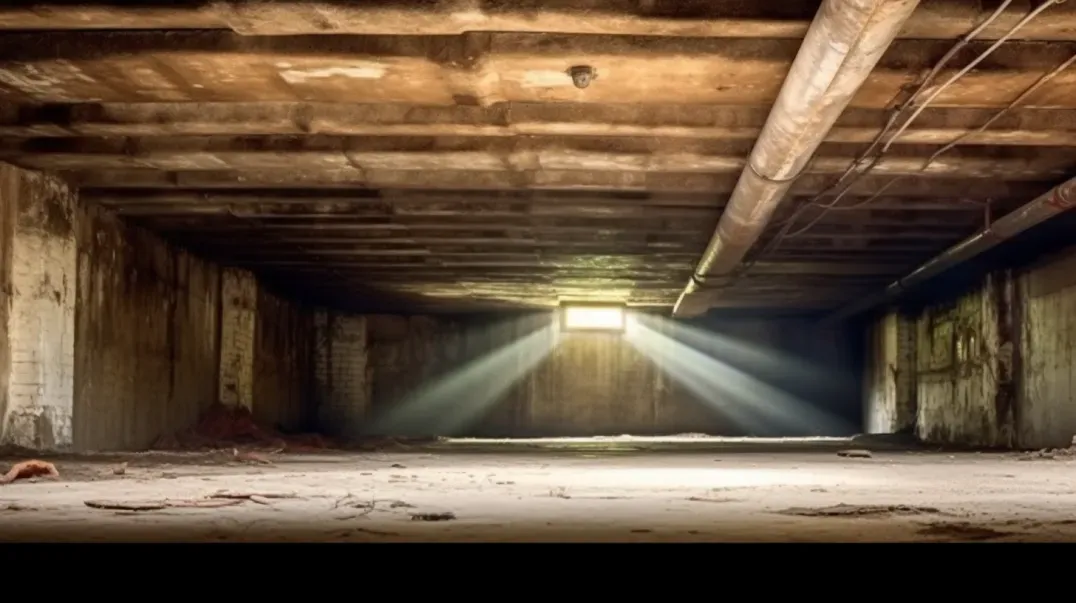In the hidden depths beneath our homes lies a critical component of our living environment the crawl space. Often overlooked, this space plays a pivotal role in the overall health and efficiency of our homes. Proper crawl space venting is not just a building requirement; it's a necessity for maintaining the structural integrity of our homes, ensuring the air we breathe is clean, and ultimately protecting our health and well-being. Yet, the challenge many homeowners face is not just understanding the importance of this ventilation but finding solutions that are both effective and affordable.
This blog delves into the heart of crawl space venting, unraveling why it's essential for every homeowner to prioritize this aspect of home maintenance. We'll explore the dangers of neglecting crawl space ventilation, including moisture buildup, mold growth, and compromised air quality, and how these issues can affect your home's structure and your health. But recognizing the problem is only the first step. The core of our discussion will focus on practical, cost-effective solutions designed to enhance ventilation efficiency without breaking the bank.
From DIY tips and tricks to the latest in affordable venting technologies, we'll guide you through a range of options to ensure your crawl space is properly ventilated, promoting a healthier, more energy-efficient home. Whether you're a new homeowner navigating the complexities of home maintenance or a seasoned property owner looking to improve your home's ventilation, this guide will equip you with the knowledge and tools you need to make informed decisions that benefit your home and your wallet.
Join us as we uncover the secrets to effective and affordable crawl space venting, and take the first step towards a healthier, happier home.
Understanding Crawl Space Ventilation Needs
The crawl space, often hidden and overlooked, plays a crucial role in the overall health and efficiency of your home. Proper ventilation in this area is not just a luxury; it's a necessity for preventing a myriad of issues that can affect your home's structure and the air quality within. Understanding your crawl space ventilation needs is the first step towards ensuring a healthy, durable, and comfortable living environment.
The Role of Ventilation in Crawl Spaces
Ventilation serves as the lungs for your crawl space, allowing it to "breathe" by exchanging stale, moist air with fresh, dry air from the outside. This process is vital for several reasons:
- Moisture Control: Adequate ventilation helps to reduce humidity levels in the crawl space, preventing condensation and the accumulation of moisture. This is crucial for preventing mold growth, wood rot, and the attraction of pests, all of which can compromise the structural integrity of your home and the health of its occupants.
- Air Quality Improvement: By reducing moisture and preventing mold growth, ventilation directly impacts the air quality in your crawl space and, by extension, your entire home. Fresh air circulation helps to dilute and remove airborne contaminants, creating a healthier living environment.
- Energy Efficiency: Properly ventilated crawl spaces can also contribute to improved energy efficiency in your home. By controlling moisture, ventilation helps to preserve insulation effectiveness and can prevent HVAC systems from overworking, leading to potential energy savings.
Assessing Your Ventilation Requirements
Determining the specific ventilation needs of your crawl space involves several factors:
- Size of the Crawl Space: The size of your crawl space directly influences the amount of ventilation needed. A general rule of thumb is 1 square foot of vent area for every 150 square feet of crawl space floor area, but this can vary based on local building codes and the specific conditions of your home.
- Climate and Environmental Conditions: Homes in areas with high humidity levels or frequent rainfall may require more aggressive ventilation strategies to control moisture effectively.
- Existing Moisture Levels: Conducting a moisture assessment of your crawl space can help determine if your current ventilation is adequate. Hygrometers or moisture meters can be used to measure humidity levels and moisture content in wood structures.
- Inspection for Blockages or Damage: Regular inspections can reveal if vents are blocked, damaged, or insufficient in number, indicating a need for adjustments or upgrades to your ventilation system.
By understanding the role of ventilation and assessing your specific needs, you can take proactive steps to ensure your crawl space is properly ventilated. This may involve cleaning or unblocking existing vents, adding new vents, or considering alternative solutions like dehumidifiers or encapsulation for more challenging environments.
Cost-Effective Ventilation Options
Ensuring your crawl space is well-ventilated is crucial for maintaining the structural integrity of your home and the health of its inhabitants. However, improving ventilation doesn't have to break the bank. There are several cost-effective solutions that homeowners can implement themselves to enhance airflow and control moisture in their crawl spaces.
DIY Ventilation Solutions
Improving your crawl space ventilation can be a straightforward and affordable project with the right approach. Here are some simple, do-it-yourself methods:
- Clearing and Cleaning Vents: Start by ensuring that all existing vents are clear of obstructions such as leaves, dirt, and debris. A blocked vent can significantly reduce airflow. Regular cleaning can maintain optimal ventilation efficiency.
- Adding Vent Screens: Installing screens on your vents can prevent pests from entering while still allowing air to circulate freely. This is a low-cost solution that can have a significant impact on ventilation quality.
- Sealing Leaks: Use caulk or foam sealant to close any gaps or cracks in your crawl space walls or around vent frames. This prevents warm, moist air from entering, which can reduce the effectiveness of your ventilation.
- DIY Vent Fans: For areas that require additional airflow, consider installing an exhaust fan in one of the vents. Solar-powered vent fans are an energy-efficient option that can provide significant airflow without additional electricity costs.
Utilizing Natural Ventilation
Leveraging natural airflow is an effective way to ventilate your crawl space without incurring high costs. Here are strategies to enhance natural ventilation:
- Cross Ventilation: Ensure your crawl space has vents on multiple sides to allow for cross ventilation. This setup encourages air to flow through the space naturally, driven by wind outside.
- Strategic Landscaping: Use landscaping to your advantage. Plant shrubs and trees in a way that directs natural breezes towards your crawl space vents. However, keep plants far enough away to avoid blocking vents with leaves or debris.
- Vent Placement: If adding new vents, consider their placement carefully to maximize natural airflow. Vents should be placed at opposite ends and sides of the crawl space to encourage air to pass through effectively.
- Temperature Differential: Take advantage of the natural temperature differential between the air inside and outside the crawl space. Opening vents during cooler times of the day can help draw in fresh air and expel warmer, moist air.
Implementing these cost-effective ventilation options can significantly improve the air quality and moisture control in your crawl space, contributing to a healthier home environment. By combining DIY solutions with strategies to enhance natural airflow, homeowners can achieve effective ventilation without the need for expensive equipment or professional installation.
Budget-Friendly Ventilation Upgrades
Upgrading your home's ventilation system is a crucial step towards ensuring a healthy and comfortable living environment. However, managing this without overspending requires knowledge of the most cost-effective solutions available. By exploring affordable vent types and materials, and understanding how to compare prices and performance, homeowners can make informed decisions that enhance their home's ventilation without straining their budget.
Affordable Vent Types and Materials
The market offers a variety of vent types and materials that cater to different needs and budgets. Here’s an overview of some cost-effective options:
- Aluminum Vents: Known for their durability and resistance to rust, aluminum vents are a popular choice among homeowners. They provide excellent airflow and are available in a range of sizes to fit different crawl spaces.
- Polyvinyl Chloride (PVC) Vents: PVC vents are lightweight, easy to install, and resistant to moisture and decay, making them ideal for humid climates. Their affordability and low maintenance requirements make them a budget-friendly option.
- Galvanized Steel Vents: While slightly more expensive than aluminum and PVC, galvanized steel vents offer superior strength and protection against pests. They are an excellent long-term investment for homeowners looking for durability without a high price tag.
- Manual and Automatic Vents: Manual vents are the most affordable option and can be opened or closed by hand, while automatic vents adjust themselves based on temperature, offering convenience and improved efficiency for a slightly higher cost.
When selecting vents, consider the specific needs of your crawl space, including size, location, and typical moisture levels, to choose the most appropriate and cost-effective type.
Comparing Prices and Performance
Balancing cost with quality and performance is key when upgrading your ventilation system. Here are some tips on how to make the best choice:
- Research and Compare: Spend time researching different vent types and brands. Read reviews and compare prices to find the best value for your money.
- Consider Efficiency: An inexpensive vent that doesn’t adequately ventilate your crawl space can lead to higher costs in the long run due to moisture-related issues. Consider the efficiency and effectiveness of each option within your budget.
- Longevity and Maintenance: Evaluate the expected lifespan and maintenance requirements of each vent type. A slightly more expensive vent that lasts longer and requires less maintenance may be more cost-effective over time.
- Professional Advice: If unsure, consult with a professional. They can provide recommendations based on your specific needs and help you avoid overspending on unnecessary features.
By carefully considering these factors, homeowners can find budget-friendly ventilation upgrades that don’t compromise on quality or performance. Investing in the right ventilation solution can improve your home’s air quality and moisture control, contributing to a healthier and more comfortable living environment.
Reducing Costs with Smart Installation
Optimizing the installation of your home's ventilation system is a strategic way to enhance efficiency and reduce costs over time. By focusing on the effective placement of vents and adopting cost-saving installation practices, homeowners can ensure their ventilation system operates at peak efficiency, minimizing the need for costly repairs or adjustments in the future.
Effective Placement of Vents
The placement of vents plays a crucial role in the overall efficiency of your home's ventilation system. Here are some tips to ensure optimal vent placement:
- Cross Ventilation: Aim for a cross-ventilation setup by placing vents on opposite sides of the crawl space. This arrangement allows for the natural flow of air, drawing fresh air in through one side and pushing stale air out the other.
- Avoid Obstructions: Ensure that vents are not obstructed by landscaping, debris, or storage items. Vents should have clear access to outdoor air to facilitate effective airflow.
- Height Considerations: Place vents close to the foundation but above typical snow lines or flood levels to prevent blockage and water intrusion.
- Utilize Natural Forces: Consider prevailing winds and natural convection patterns when placing vents. Positioning vents to take advantage of these natural forces can enhance ventilation efficiency without additional energy costs.
By carefully considering these factors during vent placement, homeowners can maximize the effectiveness of their ventilation system, ensuring adequate airflow and moisture control.
Installation Tips to Save Money
Proper installation of vents not only ensures optimal performance but can also prevent future expenses related to energy inefficiency or moisture damage. Here are some guidance tips for cost-effective vent installation:
- DIY Considerations: For homeowners comfortable with DIY projects, installing vents can be a manageable task. However, it's crucial to thoroughly research and follow all installation guidelines to avoid common pitfalls that could lead to inefficiency or damage.
- Seal Gaps: When installing vents, ensure that all gaps around the vent frame are sealed to prevent air leaks. Use appropriate caulking or foam sealants designed for outdoor use to create a tight seal.
- Invest in Quality: Opt for high-quality vents that offer durability and resistance to weathering. While they may have a higher upfront cost, their longevity and performance can lead to savings on replacements and repairs.
- Consult Professionals: If unsure about the installation process or the best placement for vents, consulting with a professional can be a wise investment. They can provide expert advice tailored to your home's specific needs, potentially saving you from costly mistakes.
Smart installation practices, from strategic vent placement to careful execution, can significantly impact the efficiency and cost-effectiveness of your home's ventilation system. By adopting these strategies, homeowners can enjoy a well-ventilated space that supports a healthy living environment and contributes to long-term savings.
Combining Ventilation with Moisture Control
Effective crawl space ventilation is a critical component of maintaining a healthy home environment, but it must be complemented by efficient moisture control measures. Moisture in the crawl space can lead to mold growth, wood rot, and attract pests, all of which can compromise the structural integrity of your home and the health of its inhabitants. Combining ventilation with moisture control strategies can help homeowners protect their homes from these risks in a cost-effective manner.
Affordable Moisture Barriers
Moisture barriers are essential for preventing ground moisture from evaporating into the crawl space air, which can then be drawn into living spaces above. Here are some cost-effective moisture barrier options:
- Polyethylene Sheeting: This is a widely used and affordable option for moisture barriers. Available in various thicknesses, 6-mil polyethylene sheeting is commonly recommended for crawl space applications. It should be laid across the crawl space floor and partially up the foundation walls, then sealed with tape at the seams for optimal effectiveness.
- Reinforced Vapor Barriers: For areas with higher moisture levels or where more durability is needed, reinforced vapor barriers made from a combination of polyethylene and a reinforcing mesh offer greater tear resistance. While slightly more expensive, they provide long-term protection against moisture.
- Liquid Vapor Barriers: Applied like paint, liquid vapor barriers create a seamless moisture block on walls and floors. They are particularly useful for irregular surfaces where traditional sheeting might be difficult to apply. This option can be cost-effective depending on the product and the size of the area to be covered.
DIY Moisture Control Techniques
In addition to installing moisture barriers, there are several DIY techniques homeowners can use to control moisture in the crawl space:
- Proper Ventilation: Ensure that crawl space vents are open and unobstructed to allow for adequate air circulation, which helps to reduce moisture levels. Consider installing vent covers that can be closed during wet seasons to prevent rainwater from entering.
- Dehumidifiers: For crawl spaces with persistent moisture issues, a dehumidifier can be an effective solution. While the initial cost may be higher, portable dehumidifiers are a simple way to actively remove moisture from the air.
- Gutter and Downspout Maintenance: Regularly cleaning gutters and ensuring downspouts direct water away from the foundation can prevent water from pooling around the crawl space, reducing the risk of moisture intrusion.
- Landscaping and Grading: Slope the ground away from your home's foundation to encourage water to drain away from the crawl space. This can be a very cost-effective way to manage moisture levels.
Combining effective ventilation with these moisture control strategies can significantly reduce the risk of moisture-related issues in your crawl space, protecting your home's structural integrity and indoor air quality. By selecting affordable moisture barrier options and implementing simple DIY techniques, homeowners can create a healthier living environment without incurring significant expenses.
FAQs
Contact Trench Guys Today!
Trench Guys will do everything we can to ensure your experience with us is excellent.
Request A FREE Estimate
Request a Free Estimate Form
Checkout Recent Post
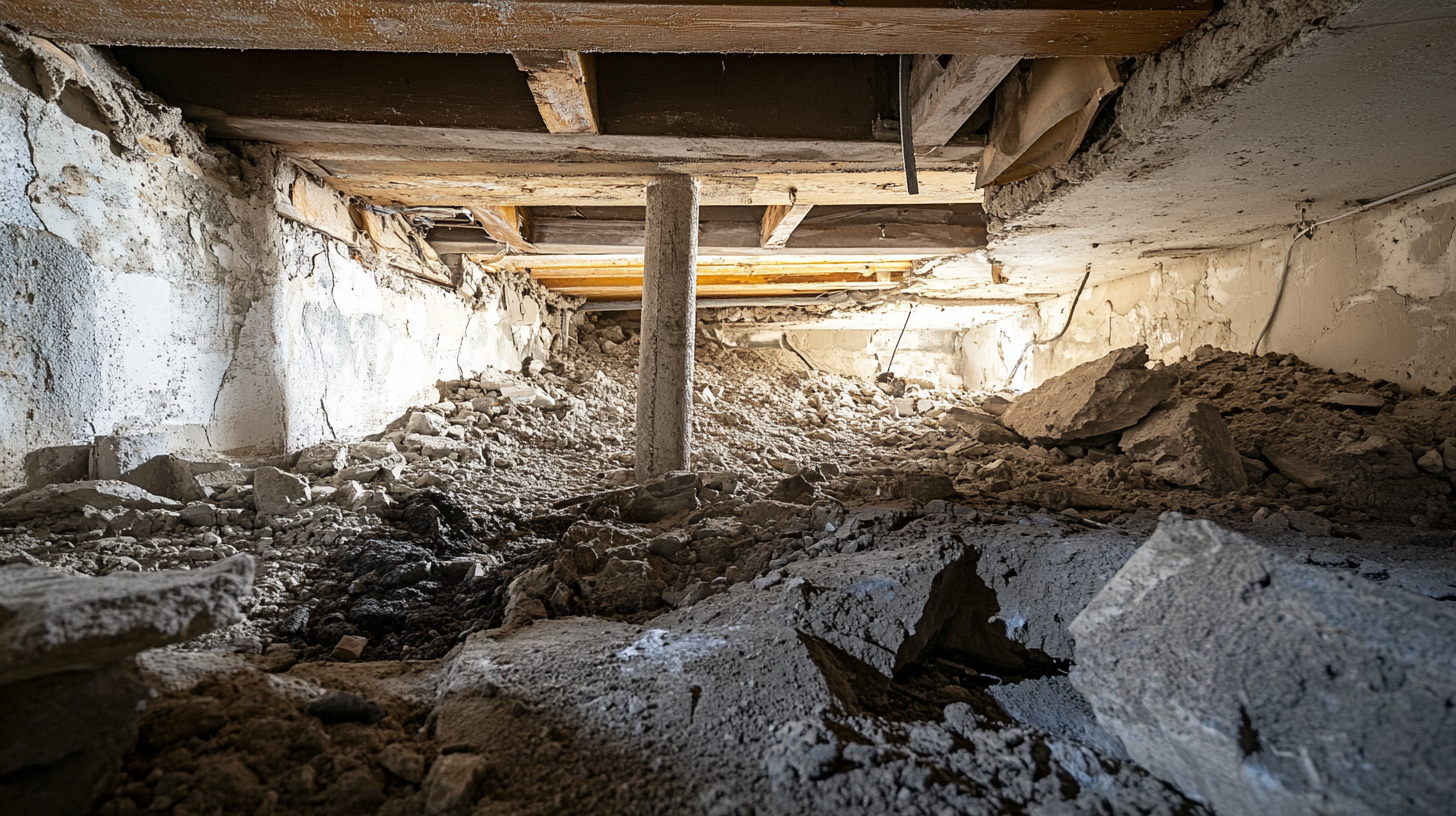
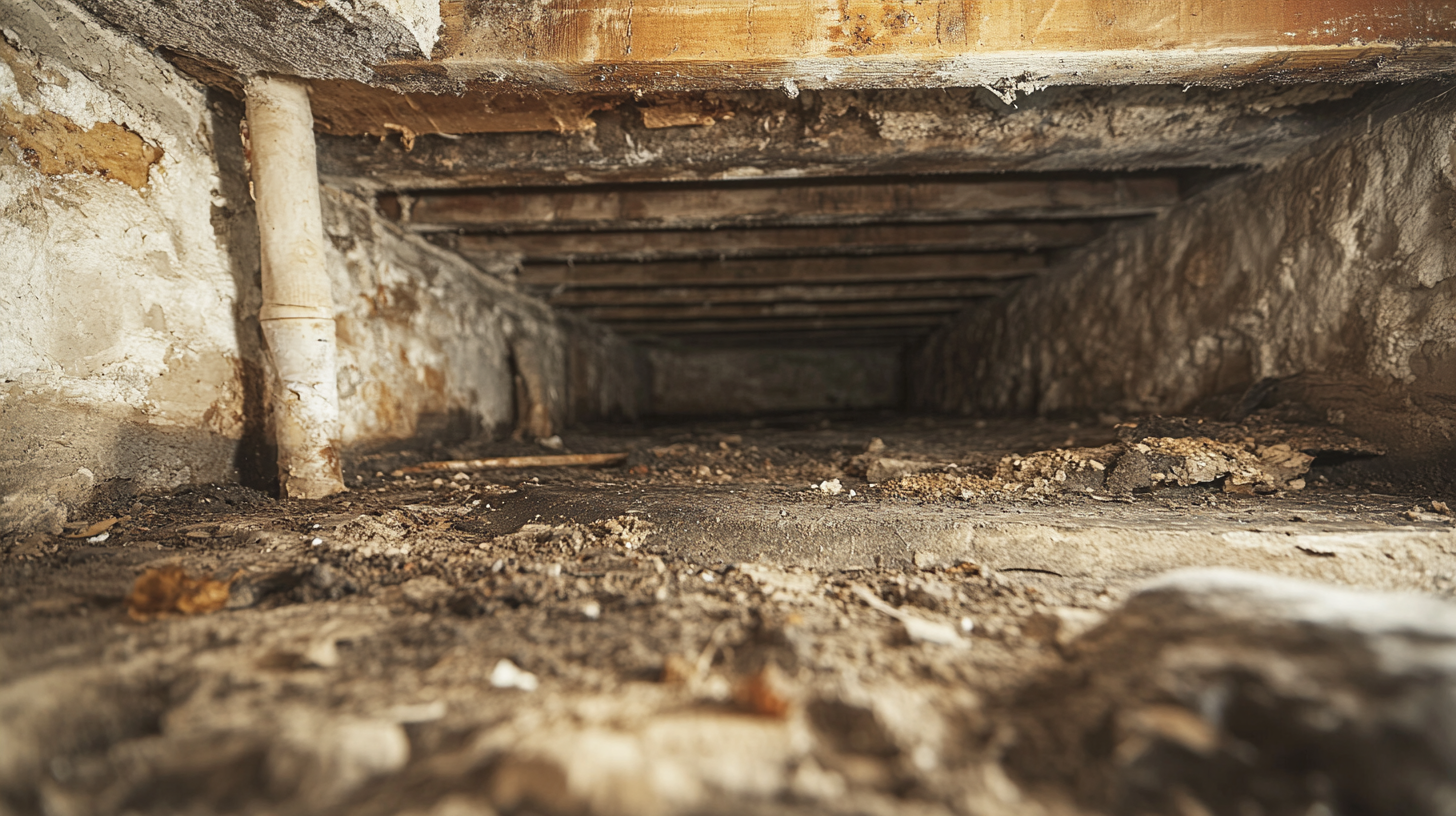
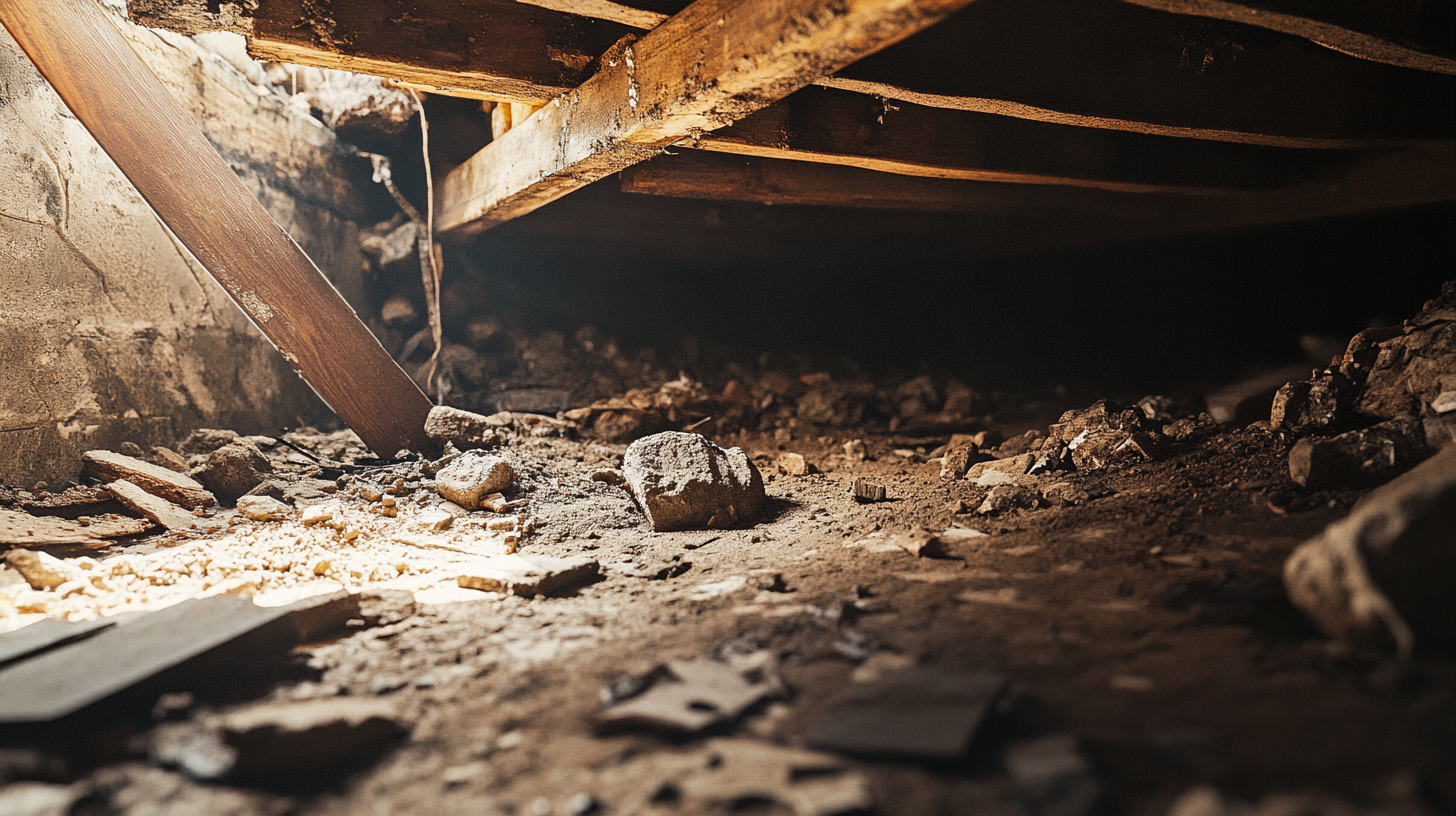
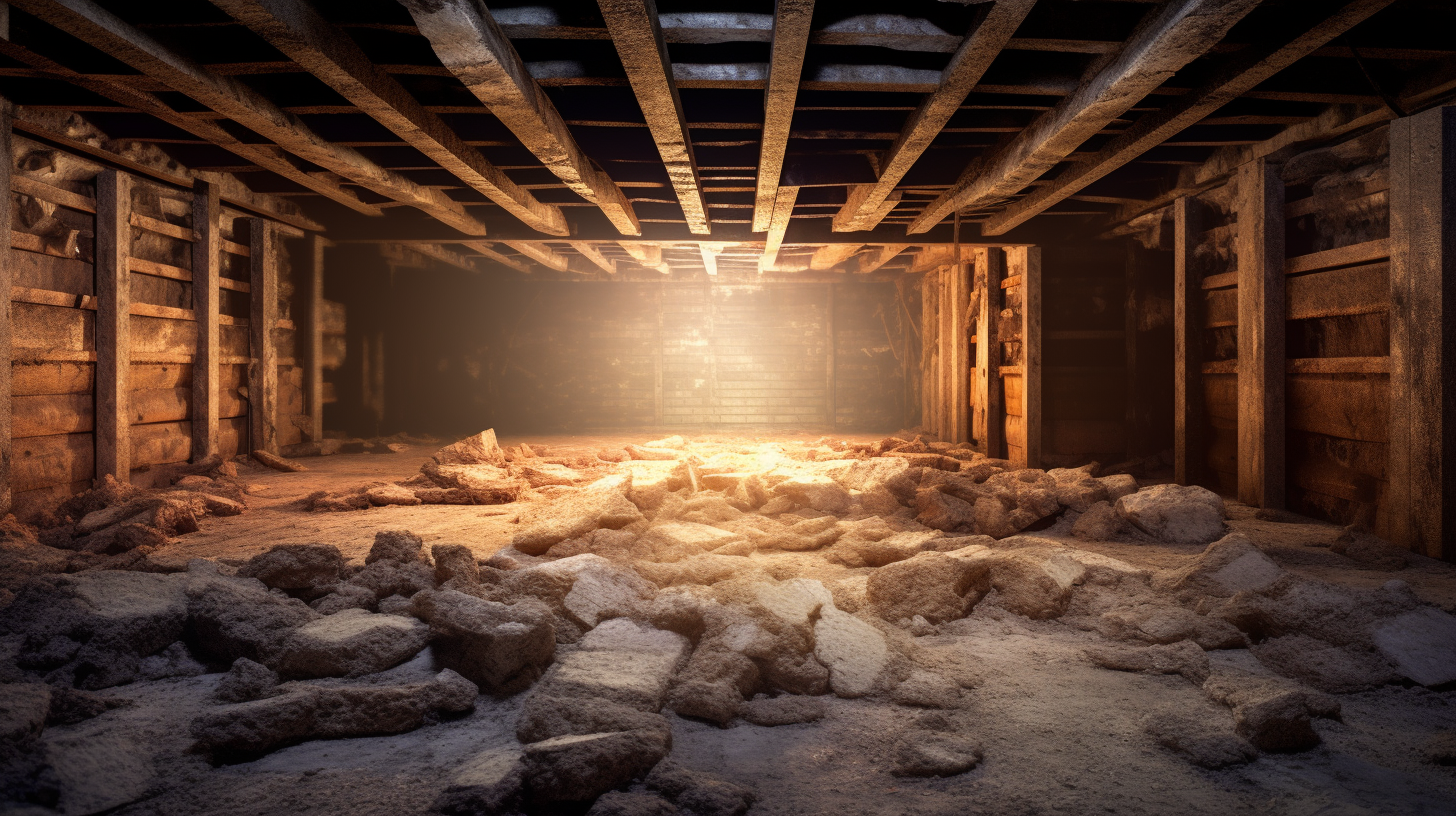
Got a Question? We’re Here to Help.
You can arrange an appointment or make an enquiry by phone or email, orget in touch to us via our contact form.


